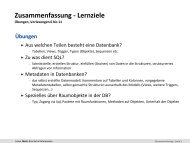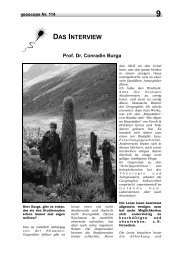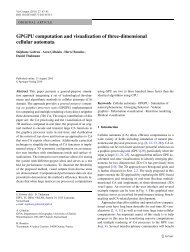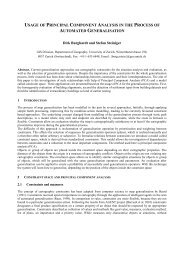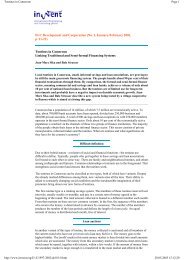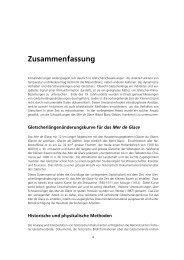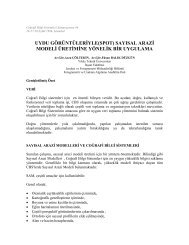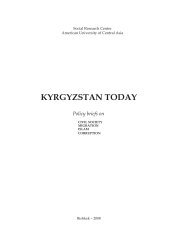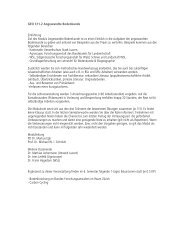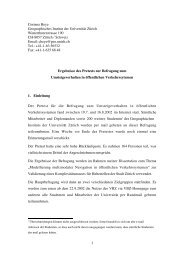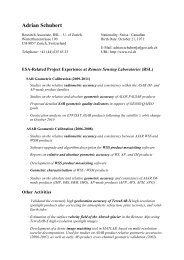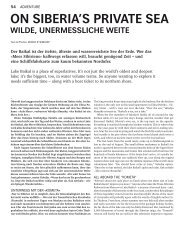Phys. Dirk Burghardt
Phys. Dirk Burghardt
Phys. Dirk Burghardt
Erfolgreiche ePaper selbst erstellen
Machen Sie aus Ihren PDF Publikationen ein blätterbares Flipbook mit unserer einzigartigen Google optimierten e-Paper Software.
4<br />
Abstract<br />
With the help of highly advanced cartographic software programs it is possible to produce<br />
topographic maps from digital data. In some cases, however, there exist graphical conflicts,<br />
because symbol widths require more space than their real-size equivalents. Generalization of<br />
such objects by manual editing is rather time-consuming. Therefore, automation of generalization<br />
operations is desirable and should be possible in the age of information technology.<br />
Automated cartographic displacement of vector data distinguishes between point, line and area<br />
objects subject to processing. Modeling of line objects assumes a central position, because the<br />
human eye is extremely sensitive to shape alterations caused by displacement. In many applications<br />
splines are well-known tool for describing lines. It is especially the energy-minimizing<br />
spline also called snakes model shape deformation as a result of external forces. The internal<br />
energy is used to maintain the line shape which has been displaced due to conflicts. First and<br />
second derivatives of the line coordinates with respect to the arc length are used as quality<br />
measures. In cartographic displacement a minimal distance between adjacent objects should be<br />
maintained. The external energy is used to describe the conflict situation if objects are too close<br />
to each other.<br />
To solve the graphic conflicts while maintaining the shape of the objects, the method of energy<br />
minimization is employed. Minimizing the energy functional of internal and external energy<br />
leads to two independent Euler equations. These are discretized by means of finite differences.<br />
The equations can be solved iteratively using the Cholesky factorization. Parametrization of the<br />
energy-minimizing splines by means of the tangent angle function (tafus) replaces the two eulerian<br />
equations of the 4 th order with one equation of the 2 nd order. Simplification of the equation<br />
system requires an additional amount of calculation for transforming the resulting changes of<br />
line direction to attain cartesian coordinates. Verification of a desirably faster convergence has<br />
yet to be achieved. The Greedy Algorithm is an alternative procedure to accomplish energy<br />
minimization using the Variational Calculus. With the aid of this algorithm the energy of each<br />
individual support point is minimized by way of minor displacements. As opposed to the Variational<br />
Calculus the effects are more local. Therefore, the Greedy Algorithm is advantageous<br />
used for the displacement of buildings or for the positioning of label boxes.<br />
The integration of this displacement approach in a cartographic program provides evidence of<br />
the fact that it can be used in practical applications. Cooperation with a software producer<br />
will help to find additional fields of application, a case in point being the automated map edge<br />
work which allows displacement and suppression of text and symbols at the map boundaries.<br />
Experience has shown that the research effort required for developing new software tools is<br />
estimated to amount to between 30 and 50 percent of the total effort.





